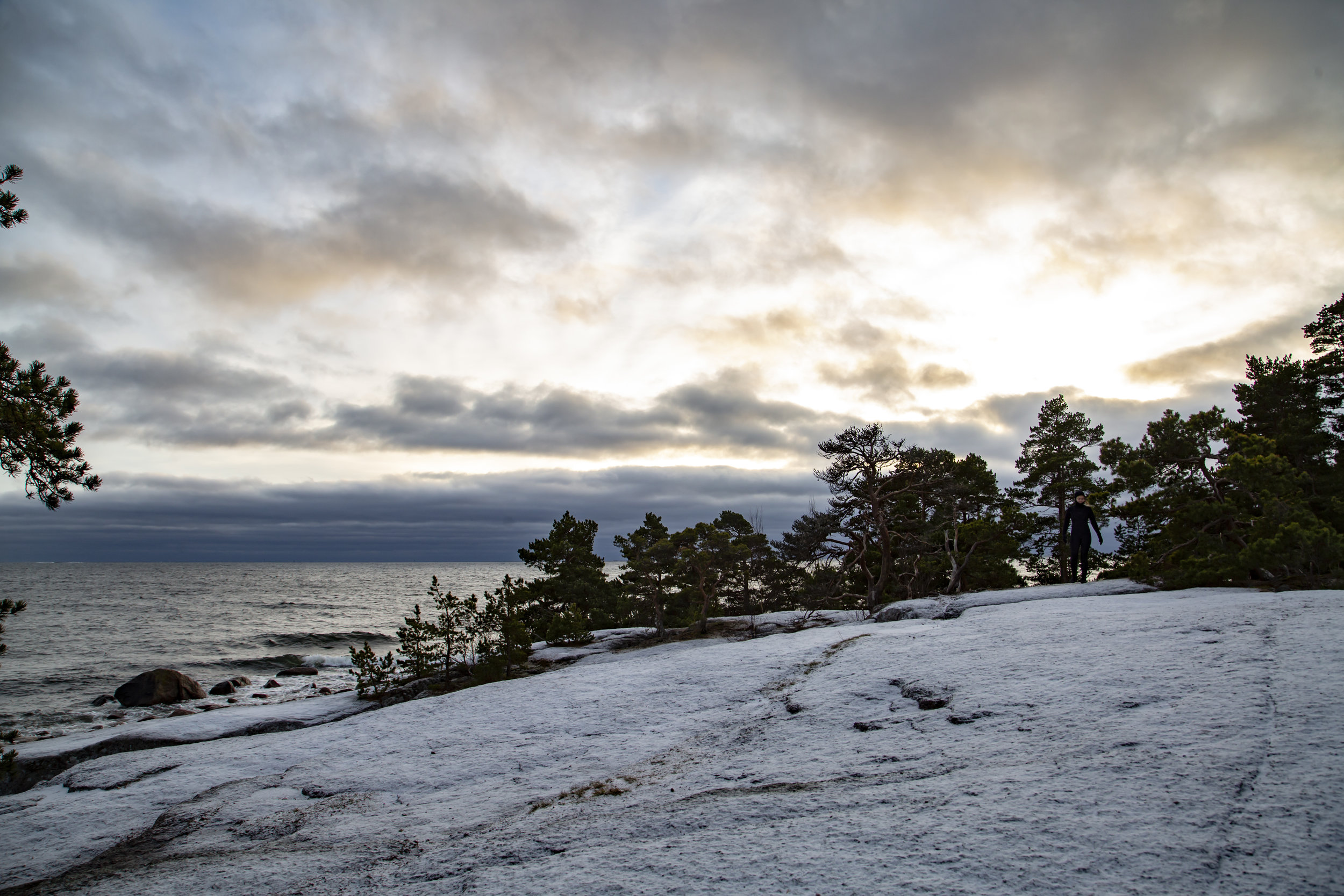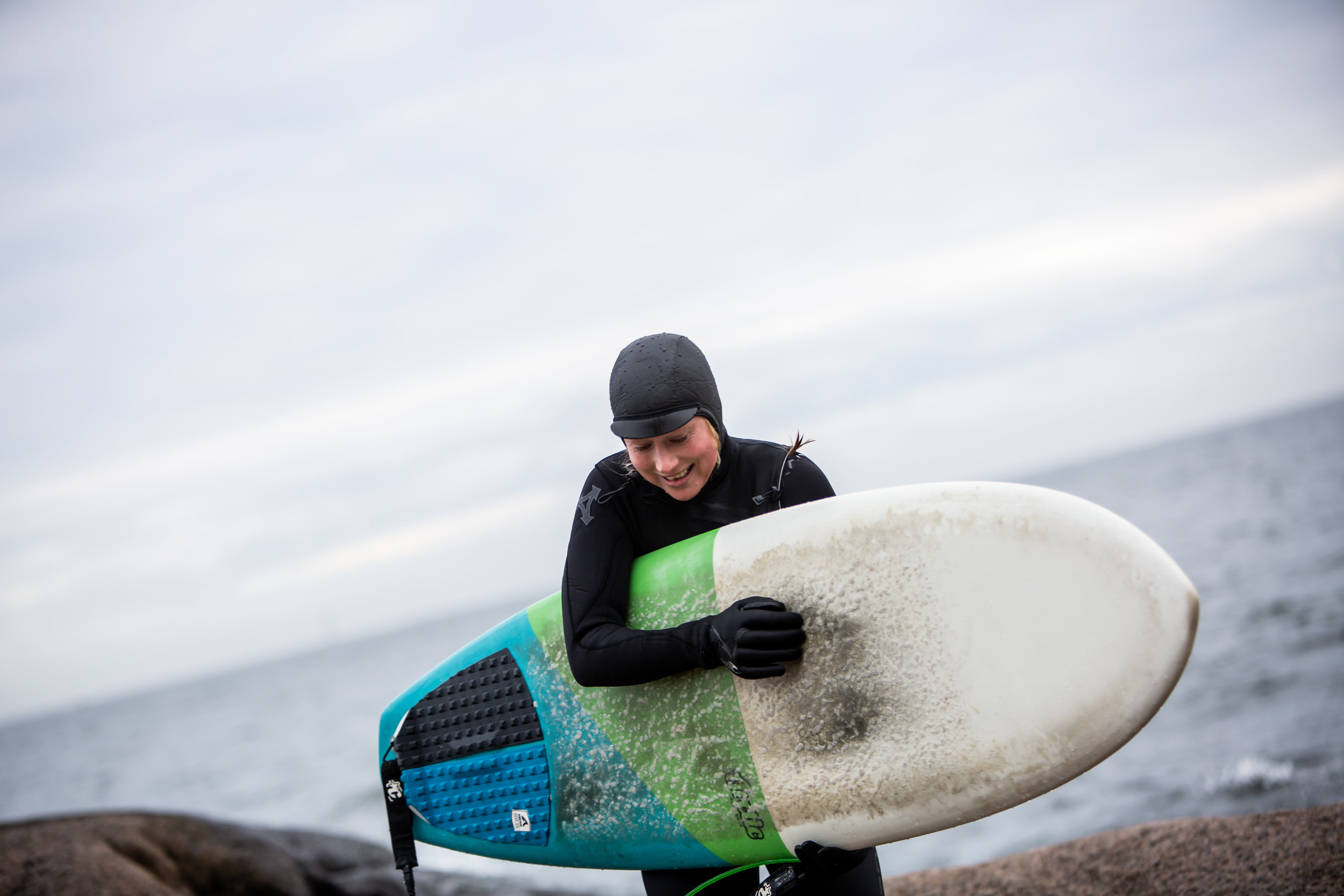long haul home

Last year’s IPCC’s report made it clear: we now have less than 11 years to reduce our emissions, or the effects of climate change will be catastrophic and irreversible. On social media, the endless surf trip dream seems to live on, but something started to change near the Arctic Circle.
Affordable flight tickets, as well as the Internet and social media have all shaped surfing into what it is today: a globally pursued lifestyle, with “the endless search” (firmly promoted by surf brands and pros alike) at its core. Long gone are the days when surfing was only a Pacific island local pastime. Now roaming the planet in search of waves seems to be an endless summer you can continue as long as there is money in your pocket. But something has just come in the way, between the epic sunsets and the swells: climate change.
It shouldn’t have come as a surprise to us. The Intergovernmental Panel on Climate Change (IPCC) has been publishing reports on global warming since the early 90s. Last year’s report finally caught wide public attention, down to our daily chit chat: we now have around 11 years to change our course of action and keep global warming at a maximum of 1.5°C above pre-industrial levels, which scientists see as a tipping point before catastrophic and irreversible damage.
How did this information affect the surfing community? On social media, the surf dream seems to live on, but something is starting to change. We talk to Elena Sulin, a 34-year-old writer and former marine biologist who after a long personal journey, rediscovered surfing in her native Finland.
Below the tropics
“I have no recollection of anyone speaking about flight-based emissions. There was no notion of it being harmful for the environment.”
In 2002 the colour of the crush was blue. So blue, 18-year-old Elena Sulin decided to leave her native Finland to learn to surf. First destination: Portugal. “After seeing the film Blue Crush I knew I wanted to learn to surf and in order to really get into it, to be able to surf almost every day, I felt I needed to be somewhere else than Finland.”
Sulin’s journey then took her to New Zealand where she started her marine biology studies, but life without travelling wasn’t an option. In the footsteps of the film’s characters, she headed to Hawaii before settling in Western Australia. Living the surf dream far away from home meant however that she was leaving behind an increasingly heavy carbon footprint. “Although living in Australia, I was still heading home once or twice a year. I have no recollection of anyone speaking about flight-based emissions. There was no notion of it being harmful for the environment.”
A decade after the film Blue Crush, a new kind of surf culture started to slowly emerge in Australia. A culture that in Sulin’s words drew from punk spirit, self sufficiency and DIY attitude.
“At some point, people realised boards could be built in a different way. Surfers understood it wasn’t OK that wax made of crude oil ended up in the ocean. My environmentally-aware friends advised me not to use sunscreen, but to prefer pure zinc instead. People were growing their own food and collecting rainwater for irrigation. It all started with these little notions, yet it had no connection to us flying abroad or driving to remote breaks with big four-wheel drives.”
Near the Arctic circle
“When you think about it, this whole flight-shaming in Sweden and in Finland has actually emerged rather fast.”
A decisive turn in Sulin’s own thinking happened after seeing yet another surf film, the Norwegian documentary North of the Sun, which depicts two Norwegian surfers building a hut from driftwood and marine litter on the beach in Northern Norway and surfing waves throughout the darkest season above the Arctic Circle. “It opened my eyes to the idea of surfing in cold water, far from famous spots. Another film that really inspired me was Taylor Steele’s Castles in the Sky where the crew surfed in Iceland.”
Pondering on how the IPCC report influenced her way of seeing things, Sulin states it only reinforced her decision to stay local. “First, I woke up to the possibilities in Finland, the fact that I could actually surf here. As the conversation turned towards these environmental questions, it only increased my motivation to find ways to practice the sport I love here, close to my family.”
With a background in science, Sulin had been aware of climate change and its impact on marine life. In her view, the IPCC report was the game changer that burst the bubble between the scientific community and the public, increasing awareness throughout society and changing her own view.
“It was a wake-up call for all of us. All of a sudden it became a statement set in stone that one could refer to and rely on. Considering the tight link between surfing and travelling, I’m still overwhelmed how little the community discussed the impacts of flying. Saying this, I also acknowledge my own ease at booking flights from one corner of the world to another. When you think about it, this whole flight-shaming in Sweden and in Finland has actually emerged rather fast.”
Talking about shame Sulin hurries to mention she is fully aware of the critique people like her, who have had their remarkable share of flights, might easily receive. “Having flown for the best part of my twenties, I feel ashamed. I’m equally incapable of understanding how we thought it could be sustainable to keep living and travelling as we did. How did that happen? This also makes me think of how I talk about flying to people these days.”
In lalaland
“I wish these influencers would understand that their choices have consequences. Sometimes we just fail to see the bigger picture.”
In order to create a sustainable surf culture, surfers need people to look up to. The lifestyle many surf brands and pro surfers currently promote leaves you wondering whether the community actually supports sustainable development. It is interesting to play with the idea of being able to enjoy a similar lifestyle with a more humble approach, to see brands creating hype around more sustainable dreams.
Sulin is quick to answer when asked about the responsibility of surf brands and the industry in creating ideals and norms. “They have a huge responsibility. If you think about how male athletes dominated the surf scene and how the WSL only just recently implemented equal pay, this sustainability issue might still take some time.”
Considering that surfing originated as a local pastime in Polynesia, Sulin doesn’t see the sport having difficulty in retreating back to a more local activity without the constant need to fly somewhere.
“It is the individual surfers, pros and the whole community, who need to create pressure from within in order to change the way we surf. I’ve now come to understand that although the ocean is home for surfers, it doesn’t mean that surfers would in any way be more tuned in to nature. Sometimes they are just athletes doing their job. I understand that it is hard to ask pro surfers to refrain from flying. It is the same if you asked ice hockey players to not fly to tournaments. When the aim is to make money with these people, they need to get fast from one place to another and stay in great condition. But I wish that at least someone would talk about the issue.”
Unfortunately, quite the opposite comes across in the interviews with pro surfers. Sulin quotes one pro who explained that the best thing about surfing was that you can book a plane and go surfing wherever in the world you want.
“I wish these influencers would understand that their choices have consequences. Sometimes we just fail to see the bigger picture. Respect the local environment, but also take care of the global one. If the rhetoric is all about taking yet another flight and living continually jet lagged, the reaction in the community is that this lifestyle is socially acceptable and even something to pursue. I hope to see a change in this. From a climate perspective, these choices should be communicated more transparently and the pros and influencers should put more effort in explaining their decisions.”
Sulin finds it hard to name any surfer who readily talks about climate change or the emissions that constant travelling causes.
Your local spot
“Do I need to fly? Are there other means of travelling? Exploring does not have to end, we just have to take a few steps back and slow down.”
After a moment she comes up with one name. She explains how she looks up to Freddie Meadows for the way he has been pushing cold water surfing forward. In general, she is happy about how the image of cold water surfing has improved.“What I don’t want to see, however, is Iceland becoming the new ‘it’ destination to fly to in order to take juicy promo photos. We need to start thinking more locally. For instance in Finland, the question is equipping yourself properly for cold surfing conditions.”
When questioning people's flying habits, Sulin thinks is fully aware of issues around her own legitimacy. “I am not forbidding anyone from flying, all I'm saying is that everyone should give it a little thought. Do I need to fly? Are there other means of travelling? Exploring does not have to end, we just have to take a few steps back and slow down.”
Sulin’s remark crystallizes a misconception we all have: travelling is synonymous with flying. When different means of transportation are used, the whole journey isn’t just travelling, it becomes an adventure. Sulin has already made travel plans for next autumn.
“I understand that the Finnish surfers might once a year feel like it would be nice to go somewhere to surf better waves and enjoy a bit of warmth, but those trips could be taken in Europe within shorter distances. Living in Australia, being spoiled with a variety of world-class waves and impeccable weather, there should basically be no reason to leave. My compromise is that once a year I travel to France to surf for a month or longer, by either taking a train or if I get others to join, a car and a ferry to get there.”
In the end, where we surf and how we feel about it has a lot to do with one’s state of mind. For a cold water surfer, Sulin has rather warm local memories to share.
“Last summer we had an exceptionally warm summer here in Finland. I was surfing in Hanko, wearing just my bathing suit. It was a beautiful sunny day and I caught a few small, but long waves. The best thing was actually the idea of me, being the same person on the exact same board as in Australia, but now back in Finland. This made me realise that in order to be yourself and do what you love, you don’t have to fly a thousand miles.”
📷: Aino Huotari (except top left: Elena’s own collection. Hawaii)
Follow Elena Sulin on Instagram
A Finnish photographer, journalist and cold water surfer, I am interested in tackling climate change and protecting the Baltic Sea. I believe we can find ways to do the things we love in a more sustainable way by raising awareness and showing the example our own communities.
Website: www.ainohuotari.com
IG: @ainohuotari // @bothniasavages







